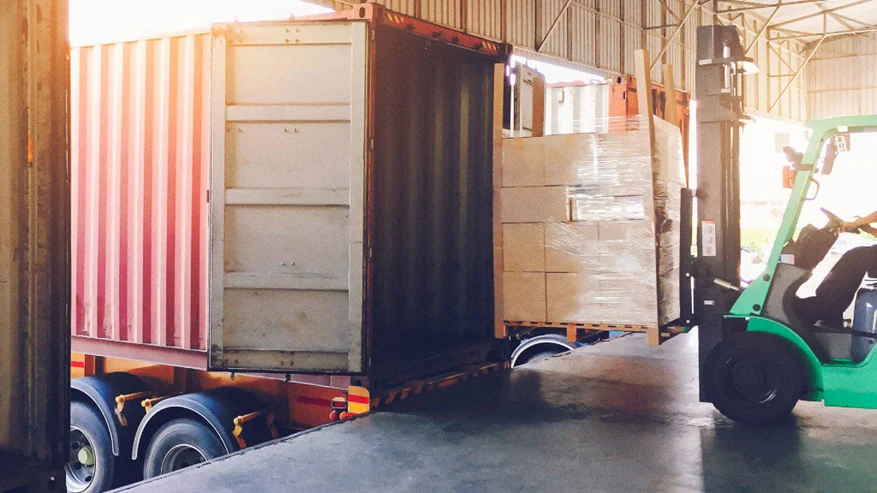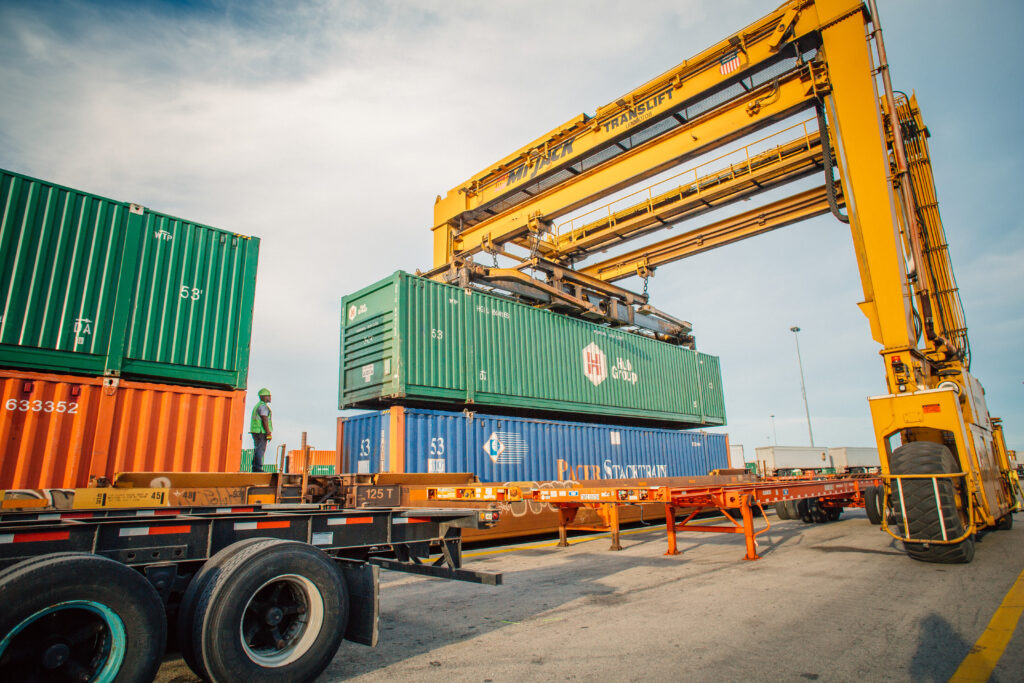Intermodal transportation has revolutionized the logistics landscape, seamlessly integrating rail, road, and sea transport. As industries expand globally, the backbone of this growth is often supported by intermodal containers. In this blog post, we will explore the best practices for managing intermodal containers, ensuring efficiency, safety, and cost-effectiveness. With comprehensive insights, strategies, and tips, this guide will serve both new and seasoned logistics professionals.
Understanding Intermodal Containers
Before diving into management practices, it’s essential to understand what intermodal containers are. These containers are standardized cargo carriers that can be moved across different modes of transport without unloading their cargo. They come in various sizes and types, including dry freight, refrigerated (reefer), and flat-rack containers.
Why Intermodal Transportation?
- Cost Efficiency: Intermodal transport often reduces shipping costs, especially for long distances.
- Environmental Sustainability: By leveraging rail for long hauls and trucks for short distances, businesses can lower their carbon footprint.
- Flexibility: Intermodal systems allow for better route optimization and can adapt to changing circumstances rapidly.
Key Elements in Managing Intermodal Containers
Managing intermodal containers involves several crucial elements:
1. Container Tracking and Monitoring
Advancements in technology have made it easier to track intermodal containers throughout their journey. Implementing a robust tracking system—such as GPS and RFID technologies—can offer significant advantages:
- Real-Time Visibility: Understanding the exact location of your containers can prevent delays and improve delivery times.
- Inventory Management: Track inventory levels accurately and make informed decisions based on real-time data.
- Loss Prevention: Enhanced tracking helps reduce the risk of theft and damage.
Best Practice: Implement software that integrates tracking systems with your existing logistics management tools to enhance visibility and usability.
2. Optimal Container Utilization
Optimizing container utilization can result in significant cost savings. Efficient packing and loading techniques should be integrated into your operations:
- Container Weight Limits: Always adhere to weight limitations to avoid fines and ensure safety.
- Maximizing Capacity: Use the right packing materials and strategies to maximize the use of space within the container.
- Container Types: Select the appropriate container type based on cargo requirements to ensure cargo safety and handling efficiency.
Best Practice: Regularly analyze shipping data to identify opportunities for optimization in container usage.
3. Maintenance and Inspections
Regular maintenance and inspections of intermodal containers are vital to ensuring safety and reliability.
- Scheduled Inspections: Develop a routine schedule for inspections—check for damages, rust, and structural integrity.
- Repairs and Replacement: Quick repair of damaged containers can prevent larger issues down the line.
Best Practice: Document all inspections and maintenance work to ensure compliance with regulations and improve the condition of your fleet over time.
4. Collaboration and Communication
Effective communication is crucial in intermodal logistics. All stakeholders, including shippers, carriers, and customs authorities, should remain in constant contact:
- Information Sharing: Utilize digital platforms that foster real-time communication and data sharing.
- Collaboration Tools: Implement project management systems that facilitate collaboration among teams, particularly in complex shipments.
Best Practice: Establish a communication protocol that assigns roles and responsibilities clearly among all involved parties.
5. Regulatory Compliance
Understanding and adhering to local and international regulations can be challenging but is essential for successful intermodal container management:
- Customs and Tariffs: Ensure compliance with customs regulations to avoid delays and fines.
- Safety Standards: Be aware of OSHA and other safety standards that apply to container handling and transportation.
Best Practice: Keep abreast of regulatory changes in the regions where you operate and invest in compliance training for your team.
6. Sustainability Practices
Emphasizing sustainability can enhance your company’s reputation and align with global movements toward environmental responsibility. Intermodal transport inherently offers sustainability advantages, but there are additional steps you can take:
- Energy-efficient Practices: Leverage energy-efficient transportation modes and practices.
- Recycling Initiatives: Implement container recycling programs where feasible.
Best Practice: Establish clear sustainability goals within your organization and identify metrics to measure progress.
Enhancing Container Management with Technology
Technology plays a crucial role in modern intermodal container management.
1. Transport Management Systems (TMS)
Implementing a TMS allows for streamlined operations. TMS software can offer benefits such as:
- Route Optimization: Identify the most efficient routes and modes of transport.
- Cost Tracking: Monitor expenses associated with each shipment and adjust strategies accordingly.
2. Data Analytics
Utilizing data analytics can unlock insights into performance. Metrics such as transit times, costs, and container utilization should guide decision-making processes.
- Performance Monitoring: Track KPIs to assess efficiency and make necessary adjustments.
- Predictive Analysis: Use historical data to forecast demand and optimize resource allocation.
3. Internet of Things (IoT)
Integrating IoT devices into your supply chain can significantly enhance monitoring capabilities. IoT sensors can provide real-time updates on conditions inside the container, from temperature to humidity levels.
Best Practice: Invest in training for your team to ensure they are adept in using technological tools to their full potential.
Risk Management Strategies
The landscape of intermodal transportation is fraught with potential risks.
1. Identifying Risks
Effective risk management starts with identifying potential risks, including:
- Damage to Cargo: Preventive measures can minimize damage during transport.
- Regulatory Compliance Risks: Engage legal expertise to navigate complex regulations.
- Supply Chain Interruptions: Implement contingency planning to handle disruptions.
2. Crisis Management Plans
Develop a crisis management plan that addresses potential risks head-on:
- Emergency Contacts: Maintain a list of contacts for emergencies, including local authorities, transport companies, and customs officials.
- Response Strategies: Outline step-by-step procedures for responding to various scenarios.
Best Practice: Conduct regular training and simulation exercises to ensure your team is prepared for crises.
Educating and Training Staff
An educated, well-trained team is the backbone of effective intermodal container management.
1. Regular Training Programs
Create ongoing training programs that cover various aspects of intermodal transport, including:
- Regulatory Compliance: Ensure staff are updated on the latest regulations.
- Safety Protocols: Develop comprehensive safety training that covers cargo handling, equipment usage, and emergency procedures.
2. Cross-Training
Encourage cross-training within your team to foster a versatile workforce that can adapt to various roles and responsibilities.
3. Creating a Knowledge Base
Develop a centralized knowledge base that contains valuable resources for staff, such as best practices, troubleshooting guides, and regulatory updates.
Final Thoughts
Managing intermodal containers requires a multifaceted approach that encompasses tracking, maintenance, risk management, and workforce training. By following the best practices outlined above, companies can optimize their container management processes, enhancing efficiency and profitability in the increasingly competitive global logistics landscape.
With intermodal transport likely to continue growing, now is the time to assess and refine your strategies. Start integrating these best practices into your logistics management efforts and watch your operations prosper.
Call to Action
Are you ready to enhance your intermodal container management practices? Begin today by evaluating your current processes and identifying areas of improvement. Don’t hesitate to consult logistics experts and leverage technology that can streamline your operations. Together, we can shape the future of logistics through efficient intermodal container management.



